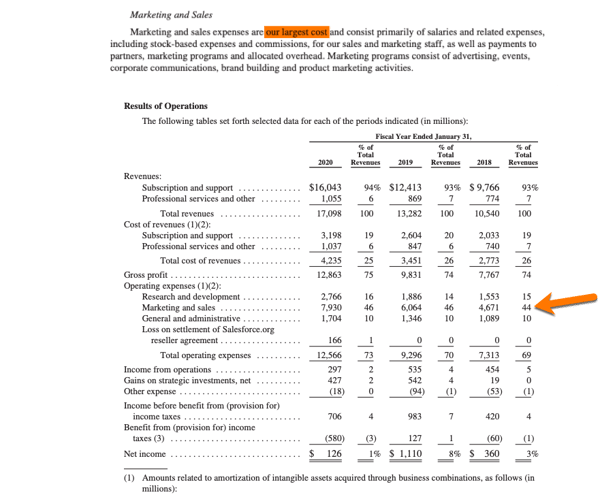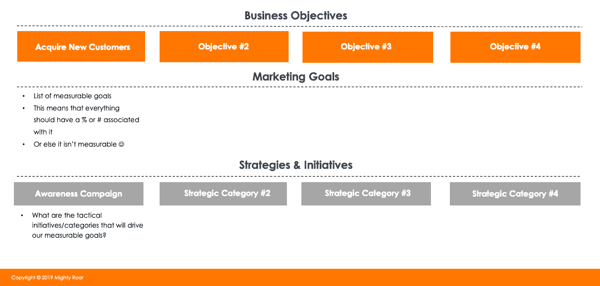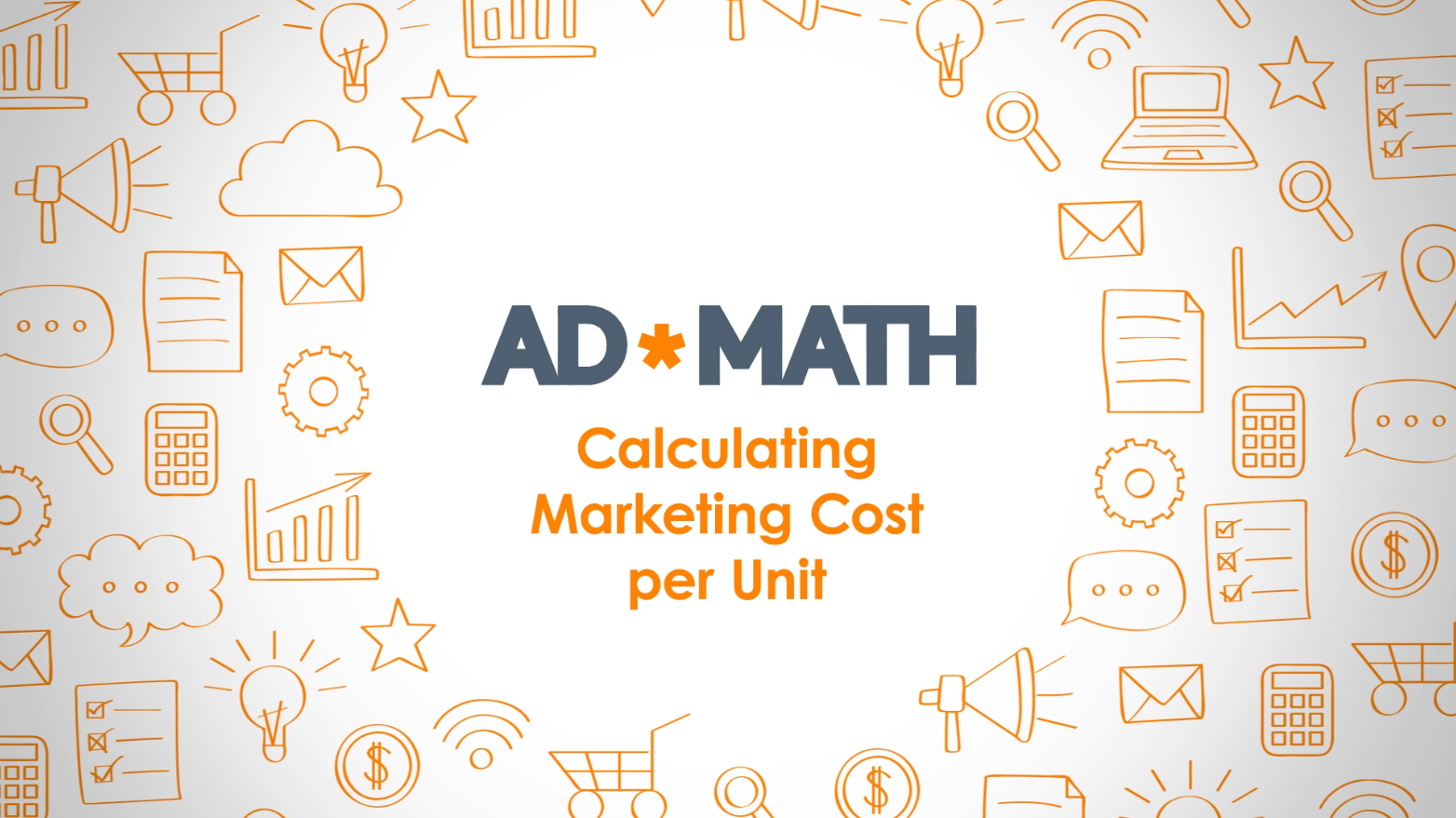How to Calculate Marketing Cost Per Unit (MCPU)
When you don't have deep pockets, every dollar in your marketing budget counts and you need to allocate your money as effectively as possible. That's...

The amount a business should set aside for its marketing budget will vary based on its position in the market, its business goals, and the competitive environment.
Generally, your marketing budget is based on a percentage of your revenue. Additional factors will include the target audience, how many product or service offerings there are, and whether you sell through retailers or direct-to-consumer.
Ultimately, your marketing budget must cover all of your marketing expenses. It includes your marketing staff, overhead, materials, agencies, and any events or trade shows you put on or plan to attend.
For these reasons, you’ll see wide swings in marketing budgets depending on the size and aggressiveness of a brand. For example, small, start-up brands may spend closer to one percent of their total revenue on marketing, while large brands like Coca Cola spend about 20% of their revenue on marketing. This is true even in B2B, as Salesforce, known for its aggressive growth, spends nearly 44% of its revenue on marketing.

Whether it’s due to the uncertainty around pricing out all of the moving pieces, or a general sense of dread that leaves marketers wondering if they've budgeted correctly or set themselves up for failure, few enjoy the process of creating a marketing budget.
At any given time, there are several high-priority projects on your team's plate. While each project is a priority in the eyes of its stakeholders, a marketing budget helps establish a hierarchy for what will make the most significant impact on your business.
Beyond providing this high-level structure, there are three main reasons why your marketing budget is essential and deserves dedicated time:
Q: You're looking to bring on a new hire?
A: Yes, here's the work they'll be doing and why it's important to hit our annual goals.
Q: I notice a large portion of the budget allocated to video. Do we need that?
A: Yes, we've seen video to be an effective medium that leads to sales. Additionally, we have two product launches next year. We will want to create demo videos for each as we've seen those achieve higher engagement for video than the written features and benefits lists on the site.
Your budget not only helps your planning, but it should build a case for what you're doing, why you're doing it, and what you expect to get from it.
The amount a business should budget varies based on its position in the market, its business goals, and the competitive environment. Additional factors include the target audience, how many product or service offerings there are, and whether you sell through retailers or direct-to-consumer.
Ultimately, your marketing budget must cover all of your marketing expenses. It includes your marketing staff, overhead, materials, agencies, and any events or trade shows you put on or attend.
You'll see wide swings in marketing budgets depending on the size and aggressiveness of a brand. For example, small, start-up brands may spend closer to one percent of their total revenue on marketing, while large brands like Coca Cola spend about 20% of their revenue on marketing.
This is true even in B2B, as Salesforce, known for its aggressive growth, spends nearly 44% of its revenue on marketing.

Regardless of your revenue number, here are some key questions to consider when determining what's right for your business when creating your marketing budget:
It's pointless to plan a marketing budget without assessing how your marketing performed previously. When you review last year's plan, try to uncover what worked, what didn't, and what caused the difference between your expectations and actuals.
If we're honest, the most common approach to determining the size of a marketing budget is historical precedent. Companies often base their budgets on what they spent in the previous year.
That's why it's essential to consider your marketing budget with fresh eyes. For example, are some tactics in your marketing plan there because it's "what you've always done?"
Marketing plans that are merely adjusted year-to-year, and not entirely rewritten from scratch, often contain elements that may have made sense 3 or 5 years ago but no longer make sense now. Be hard on your past plans, and resist the urge to rubber stamp tactics without ensuring they still fit your current strategic needs.
This approach will put you in a better position to grow upon past success and identify areas where you can test and experiment while reducing any repeat mistakes.
Don't lose sight of what truly matters for your business. What are the goals in the mind of the CEO and the board of directors? Do they align with your marketing goals?
Are the goals realistic based on previous budgets and audience targets, or is an additional investment needed? Ensure all key stakeholders within your organization are aligned with the core objectives, the effort involved, and what will be expected from each of them to be successful.
Not only will this group buy-in align expectations, but it guides future discussions around any unplanned requests for marketing support.
You'll be able to point to the original plan, discuss where this new initiative fits, and how it impacts the budget or other marketing efforts.
Your target audience plays a significant factor in the cost of your marketing programs. Your budget must consider the number of personas and audience segments you'll need to reach and their content habits.
Will your marketing focus on an existing customer base or a new, unfamiliar audience?
Is your target older, relying on more traditional media, or are they younger mainly using digital channels?
Questions like these need to be answered and prioritized to determine proper budget allocation.
Factor in your current level of brand awareness, especially if you're trying to reach a new audience or introduce a new product or service.
How much of your marketing will need to educate your audience regarding who you are as a brand and why they should consider you?
To do this, analyze the consumer journey of your audience segments. What are the barriers or points of uncertainty across each phase that you can anticipate based on their current understanding of the brand and the category in general?
Putting all of your efforts into product-specific marketing may be wasted if your audience doesn't know who you are or why they should trust you and your products over a more well-known brand. For this reason, you'll often find that investing in brand awareness will help drive your product-specific marketing costs down.
It's important to understand your competition, although that doesn't mean you have to outspend them to succeed. We have a lot of experience helping mid-sized brands take on market leaders and proving that point.
By reverse-engineering your competitions' marketing, you can identify threats and areas of opportunity where your budget should be allocated and gain insights regarding their messaging and audience targeting.
Additionally, understanding your share of voice among your competitors will help you decide where to invest and where do reduce your spending to avoid waste.
There are four ways to approach building your marketing budget. Depending on your organization, the method you use may be determined for you. However, that doesn't mean it's necessarily the best method, so let's dive into the differences:
In this method (and we use that term loosely), someone at the executive level has already established how much money marketing will get this year. The amount is most likely a refresh of the previous year's budget. That's it. This approach is not a very insights-driven, nor does it provide the flexibility for real growth or planning. Sure makes for a short "how to create a marketing budget" article though.
Percent of revenue is a common method for guesstimating a competitor's budget, as annual revenue data is available for public companies. However, it again bases future results against past performance and most likely metrics that do not align.

Typical rules of thumb when creating a marketing budget suggest that:
For example, let's imagine you're the CMO of a company that has a $10,000,000 revenue. Your marketing budget for next year is 10% of revenue or $1,000,000. You meet with the CEO, and he has ambitious plans to double the growth from existing customers and launch two new products.
Could you do this with $1,000,000? Maybe.
However, at some point, something has to give to fund your goals appropriately retroactively.
With this method, you're looking at your main competitors' marketing and trying to determine what it would cost you to mimic or surpass them. The downside here is obvious, but just in case:
YOU ARE NOT YOUR COMPETITOR.
Stating that doesn't mean that you shouldn't keep an eye on what your competitor is doing, but rather that what is right for them may not be right for you.
Additionally, they may not be right at all.
Now, brands may find some success with this method as you're letting your competitor be the guinea pig. However, you will struggle to gain market share and will most likely do more harm to your brand than good.
A goals-driven approach is what we recommend at Mighty Roar as it establishes realistic amounts based on what you're trying to achieve. Additionally, it allows your budget to speak the same language as your business.
The framework that we use is Objectives, Goals, Strategies, and Initiatives.

We often tell clients that the top objectives should be the same high-level metrics that your CEO would report to their board of directors.
From there, everything should ladder down and align.

This structure not only helps in budget planning but also in project alignment throughout the year. If a new idea or project doesn't align with a measurable goal, then it may not be worth doing.
The biggest question you be asked when finalizing your marketing budget will be how much you can expect to gain in return for your investment.
The answer here is: it depends.
Your ROI will be specific to your unique situation due to the variables that go into your costs. Additionally, depending on your needs, some marketing strategies, such as brand awareness, and tactics, like SEO, require a longer timeline than others before showing significant returns.
That said, marketing should not begin without success measures and expectations in place.
Your marketing metrics and benchmark ROI should be set and closely monitored with the expectation that they may shift as information is received.
Shifting your goal isn't "cheating." It doesn't mean that you replace your goals when you miss them with something more attainable and try again.
It's an opportunity to gather quick insights, make adjustments where needed, and reevaluate the plan holistically.
It's important to highlight the need for over-communication is here. Your progress, set-backs, insights, and optimizations should be shared with the key stakeholders who signed-off on the marketing plan originally. This may prompt new information or changes from their side as well, which may impact you.
After all, this is where your value as a marketer is critical within your organization. The goal should not be to create a "set it and forget it" style marketing plan and hope for the best, but to build a flexible plan that serves as a tool allowing you to react quickly – and strategically – to what your data is telling you.
Sign up for our monthly newsletter to receive updates.

When you don't have deep pockets, every dollar in your marketing budget counts and you need to allocate your money as effectively as possible. That's...

Optimization is frequently discussed in digital marketing because it is one of the best areas to test and adjust your campaign assets and see near...

The word brand is often misused in marketing. The confusion is likely tied to the fact that most “brands” didn’t start out thinking of themselves as...